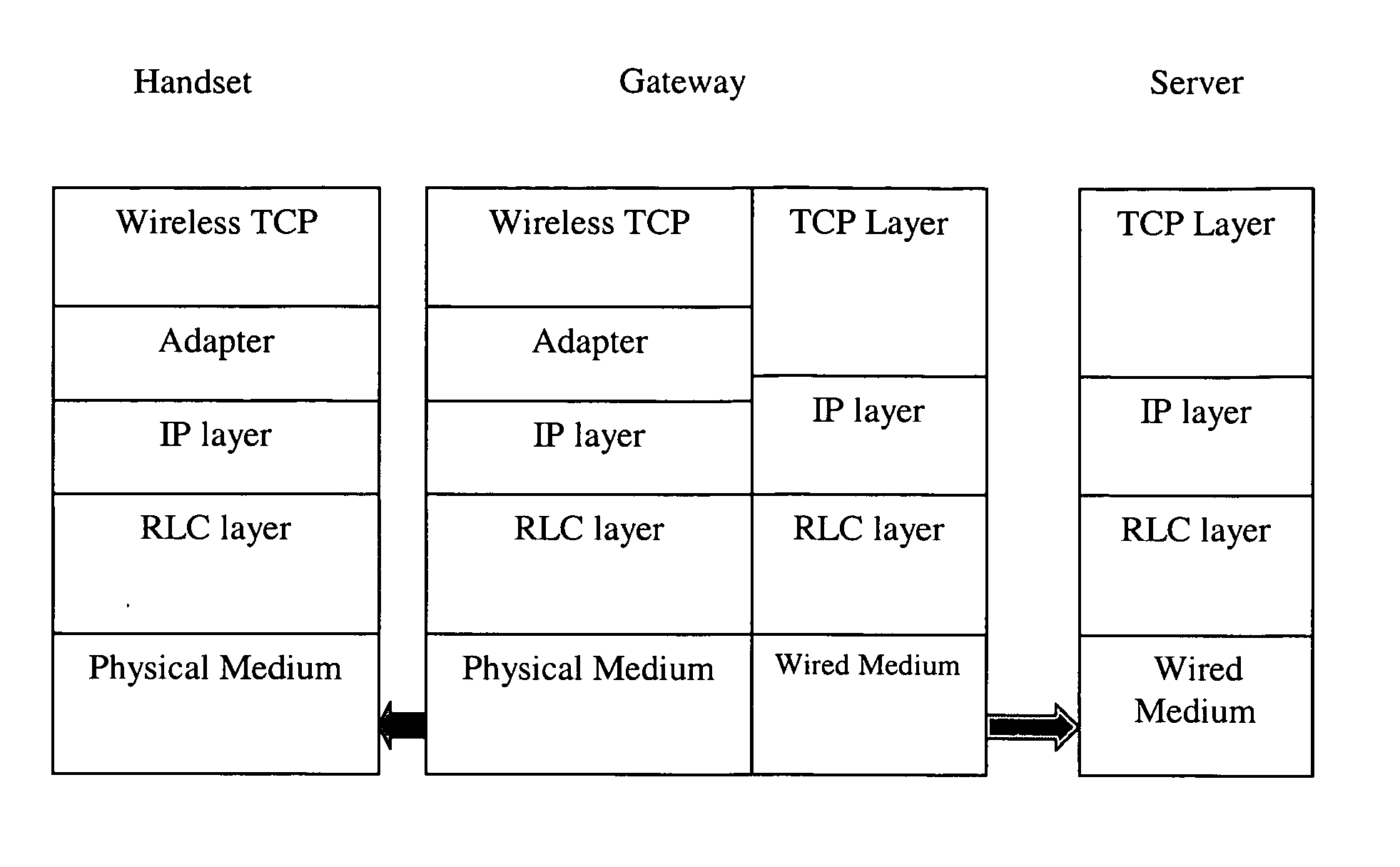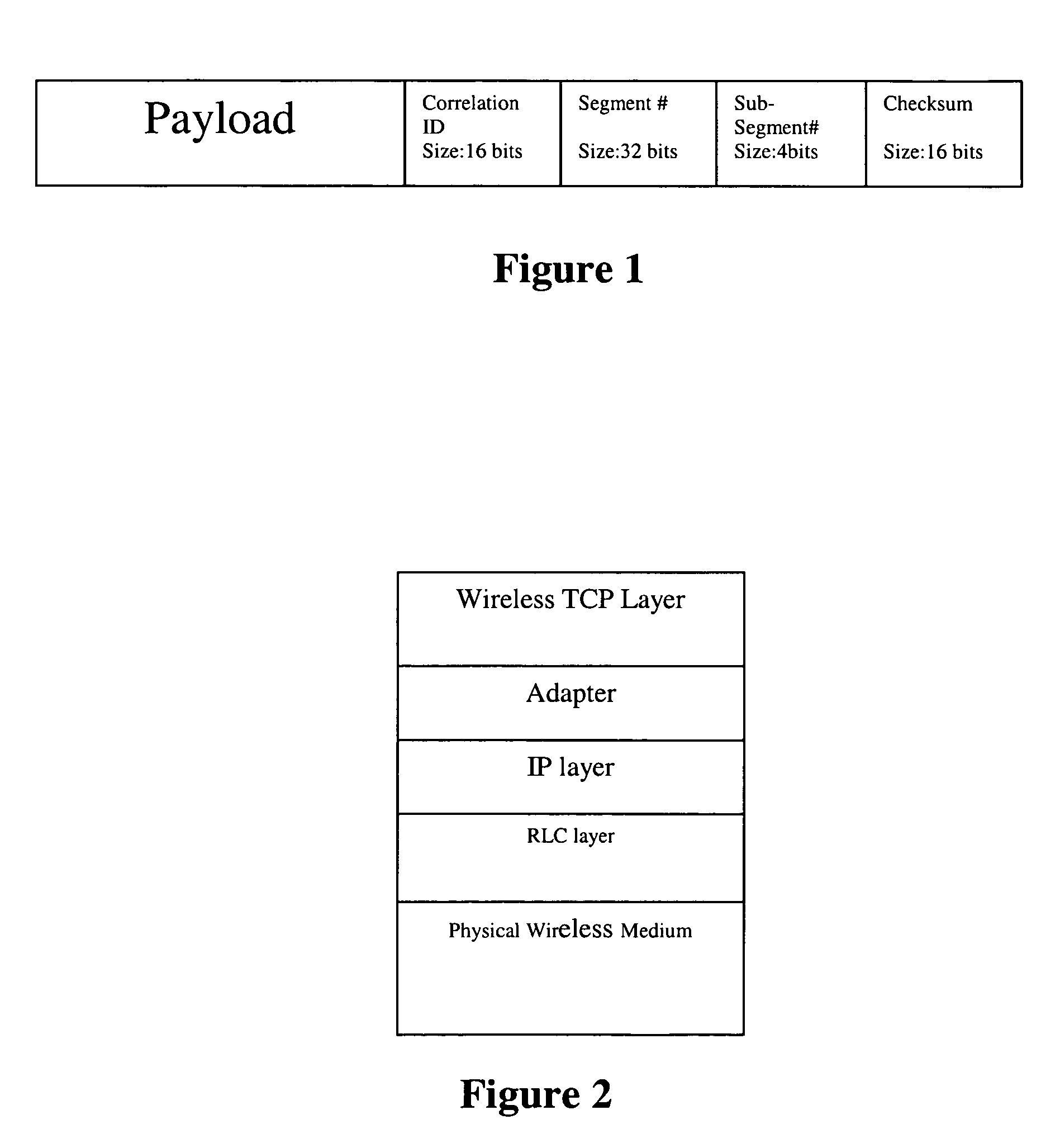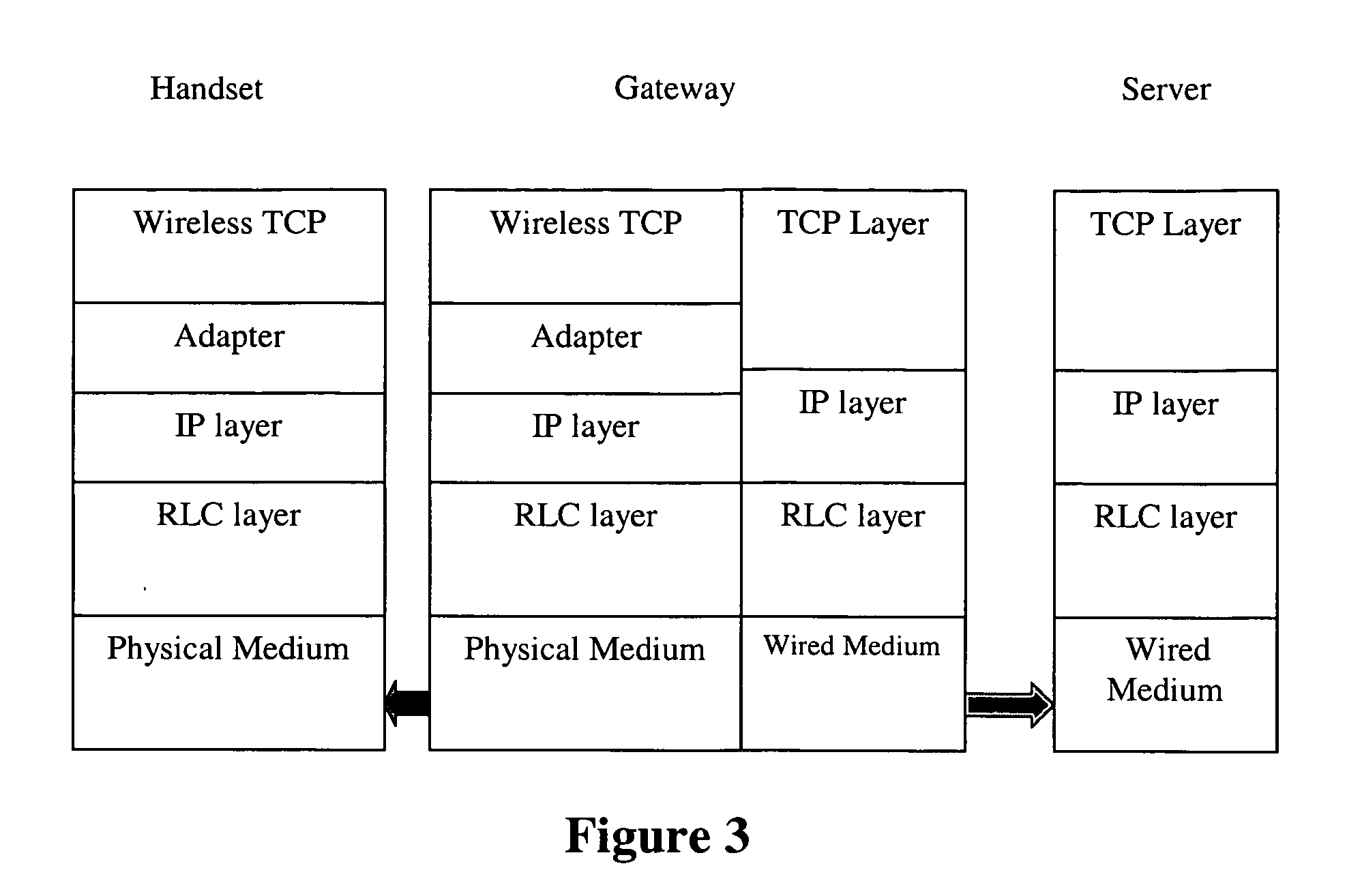Sub-segment based transport layer protocol for wireless medium
a wireless medium and sub-segment technology, applied in data switching networks, high-level techniques, sustainable buildings, etc., can solve the problems of poor wireless communication performance of tcp over wireless links, packet loss, and tcp does not adapt well to wireless communications, so as to achieve successful wireless communications, save bandwidth, and improve performance. significant
- Summary
- Abstract
- Description
- Claims
- Application Information
AI Technical Summary
Benefits of technology
Problems solved by technology
Method used
Image
Examples
Embodiment Construction
Sub-Segmentation:
[0019] Referring to FIGS. 1 and 2, the Transport layer protocol that is specially designed for the wireless medium uses the concept of sub-segmentation—the Transport layer segment is divided into a header and a series of sub-segments. Each sub-segment is as small as one RLC (radio link control) PDU payload (roughly 40 bytes for WCDMA [wideband code division multiple access]) and carries (1) the checksum of the TCP header as correlation ID to associate the transport layer header with a sub-segment—the checksum is unique for each PDU in the context of destination, source, sequence number, etc.; (2) the checksum for itself to detect the corruption of the sub-segment; (3) the corresponding sub-segment number, which is unique in the context of a segment; and (4) the data payload.
[0020] The overhead size of each sub-segment is less than 10%.
[0021] The rationale for selecting this approach is as follows. A standard TCP packet (each approximately 540 bytes in size, by d...
PUM
 Login to View More
Login to View More Abstract
Description
Claims
Application Information
 Login to View More
Login to View More - R&D
- Intellectual Property
- Life Sciences
- Materials
- Tech Scout
- Unparalleled Data Quality
- Higher Quality Content
- 60% Fewer Hallucinations
Browse by: Latest US Patents, China's latest patents, Technical Efficacy Thesaurus, Application Domain, Technology Topic, Popular Technical Reports.
© 2025 PatSnap. All rights reserved.Legal|Privacy policy|Modern Slavery Act Transparency Statement|Sitemap|About US| Contact US: help@patsnap.com



